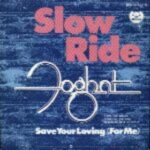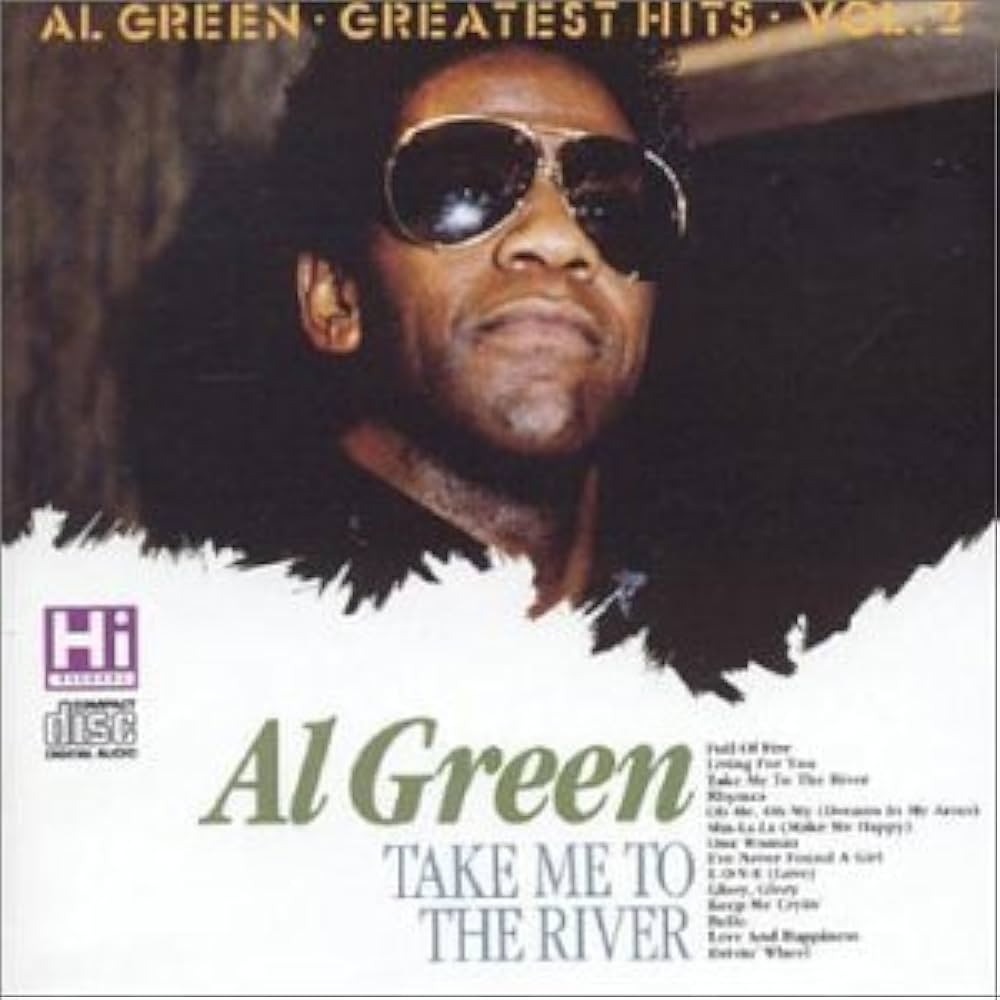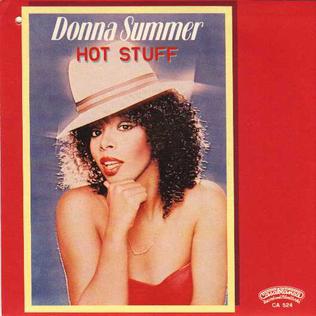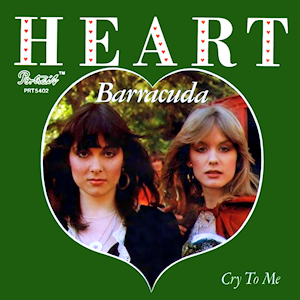 Foghat’s 1975 hit “Slow Ride” remains one of the most iconic tracks in the history of classic rock, embodying the essence of blues-infused hard rock while capturing a sense of unbridled freedom and indulgent fun. Written by guitarist Lonesome Dave Peverett, the song showcased Foghat’s ability to merge gritty blues roots with radio-ready hooks, creating a track that transcended decades and became a staple of rock radio, arena shows, and party playlists alike. “Slow Ride” isn’t just a song; it is a cultural touchstone, a celebration of the thrill of the open road, late-night adventures, and the unapologetic embrace of rock ‘n’ roll hedonism. Its impact on music, popular culture, and live performance remains profound, influencing generations of musicians and solidifying Foghat’s legacy as a defining force in 1970s rock.
Foghat’s 1975 hit “Slow Ride” remains one of the most iconic tracks in the history of classic rock, embodying the essence of blues-infused hard rock while capturing a sense of unbridled freedom and indulgent fun. Written by guitarist Lonesome Dave Peverett, the song showcased Foghat’s ability to merge gritty blues roots with radio-ready hooks, creating a track that transcended decades and became a staple of rock radio, arena shows, and party playlists alike. “Slow Ride” isn’t just a song; it is a cultural touchstone, a celebration of the thrill of the open road, late-night adventures, and the unapologetic embrace of rock ‘n’ roll hedonism. Its impact on music, popular culture, and live performance remains profound, influencing generations of musicians and solidifying Foghat’s legacy as a defining force in 1970s rock.
The origins of “Slow Ride” are firmly rooted in Foghat’s blues-rock sensibilities. The band, formed in London in 1971, emerged from the British blues scene, drawing inspiration from artists such as Muddy Waters, Howlin’ Wolf, and Bluesbreakers-era John Mayall. By the mid-1970s, Foghat had honed a distinctive sound characterized by driving rhythms, infectious grooves, and Peverett’s gravelly, commanding vocals. “Slow Ride,” featured on the album Fool for the City, distilled these influences into a high-energy anthem that was both accessible to mainstream audiences and firmly grounded in blues-rock authenticity. The song’s conception combined the spontaneity of jam sessions with Peverett’s knack for crafting compelling lyrical narratives and memorable riffs.
Musically, “Slow Ride” exemplifies the power of groove-driven rock. The song opens with one of the most instantly recognizable guitar riffs in classic rock history, a riff that balances melodic simplicity with rhythmic drive. Peverett’s guitar tone, saturated with sustain and a hint of overdrive, sets the stage for the track’s energetic propulsion. Rod Price, the band’s other guitarist, adds complementary textures with slide techniques and blues-infused embellishments, creating a layered guitar sound that is both rich and dynamic. The interplay between the guitars forms the backbone of the song, providing both harmonic depth and a sense of kinetic energy.
The rhythm section further reinforces the song’s enduring appeal. Tony Stevens’ bass anchors the groove with precision, complementing Roger Earl’s drums, which drive the song forward with tight, swinging patterns. The combination of steady rhythmic foundation and dynamic guitar interplay gives “Slow Ride” a sense of momentum that mirrors the song’s lyrical narrative of a carefree, late-night adventure. Listeners can almost feel the acceleration of the rhythm as they are drawn into the song’s relentless forward motion, making it an experience as much as a listening pleasure.
Lyrically, “Slow Ride” captures the essence of indulgence and liberation. The song’s narrative revolves around a night of freedom, seduction, and excitement, with Peverett’s vocal delivery emphasizing both swagger and playfulness. Lines such as “Slow ride / Take it easy” serve as a mantra for letting go, embracing the moment, and reveling in the thrill of life’s unpredictability. The lyrics balance directness with evocative imagery, allowing listeners to project their own experiences of adventure, flirtation, and risk onto the song. This combination of specificity and universality is a key reason for the track’s enduring resonance across generations.
Foghat’s vocal performance on “Slow Ride” exemplifies the band’s blues roots while embracing the larger-than-life ethos of 1970s rock. Peverett’s voice conveys a sense of authority and charisma, effortlessly navigating the track’s narrative arc from teasing invitation to full-throated celebration. The phrasing emphasizes rhythm and timing as much as melody, with subtle shifts in tone adding texture and personality. This vocal approach enhances the song’s storytelling, making listeners feel as though they are part of the nocturnal journey depicted in the lyrics.
The song’s production, handled by Nick Jameson, emphasizes clarity and power, capturing both the raw energy of the band and the precision of their musicianship. Each instrument occupies a distinct sonic space, allowing the intricate interplay between guitars, bass, and drums to shine. The mix balances grit and polish, retaining the immediacy of a live performance while ensuring radio-friendly fidelity. This approach contributed to “Slow Ride” becoming not only a concert favorite but also a commercial success, resonating with both casual listeners and devoted rock fans.
Culturally, “Slow Ride” epitomized the ethos of 1970s rock culture. At a time when rock music celebrated freedom, excess, and individuality, the song became an anthem for late-night revelry, road trips, and unrestrained living. Its themes of liberation and sensuality resonated with audiences navigating the social and political turbulence of the decade, offering both escapism and empowerment. The song’s celebratory tone and infectious groove encouraged communal engagement, making it a favorite at concerts, parties, and festivals. Its impact extended beyond music into lifestyle and identity, contributing to the mythology of rock ‘n’ roll as a vehicle for personal expression and rebellion.
The music video for “Slow Ride,” while released in a later MTV-era context, reinforced the song’s playful, adventurous spirit. Featuring performance footage and imagery of nightlife and cruising, the video visually captured the essence of the song’s narrative: freedom, flirtation, and the kinetic energy of rock. While simple by modern standards, the video’s aesthetic complements the song’s themes, emphasizing the raw, unfiltered charisma of the band and the timeless appeal of their music.
Commercially, “Slow Ride” became one of Foghat’s most successful singles. The song charted on the Billboard Hot 100 and became a staple of classic rock radio, cementing the band’s reputation in both the United States and the United Kingdom. Its enduring airplay and continued popularity underscore its status as a defining track of the era, appealing to both original listeners and new audiences discovering the band decades later. The song’s success also elevated Fool for the City as an album, contributing to its critical and commercial recognition and establishing Foghat as a major force in blues-rock and hard rock.
Live performances of “Slow Ride” illustrate the song’s adaptability and enduring energy. Concert footage from the 1970s through contemporary tours shows the band extending instrumental sections, engaging with audiences, and maintaining the song’s signature groove while allowing for improvisation. These performances highlight the band’s technical skill and charisma, transforming “Slow Ride” into an immersive experience that goes beyond the studio recording. The communal energy generated during live renditions reinforces the song’s role as both a musical and social experience, connecting performers and audiences through shared enthusiasm and rhythm.
Foghat’s influence through “Slow Ride” extends to subsequent generations of rock musicians. The track’s combination of blues roots, hard rock sensibilities, and infectious hooks served as a blueprint for bands exploring similar genres. Guitarists have cited Kossoff’s tonal richness and slide techniques as influential, while the song’s rhythmic precision and dynamic interplay have informed approaches to rock ensemble performance. Moreover, “Slow Ride” demonstrated the commercial potential of blues-infused rock in a mainstream context, inspiring artists to embrace authenticity and technical skill while crafting radio-friendly hits.
The song’s enduring appeal also lies in its narrative flexibility. While rooted in the specifics of 1970s rock culture, the story of freedom, excitement, and nocturnal adventure resonates universally. Listeners continue to relate to the exhilaration of hitting the open road, enjoying the night, or indulging in a sense of playful rebellion. This timeless quality ensures that “Slow Ride” remains relevant, capable of inspiring new generations to embrace the song’s spirit of liberation and celebration.
From a musical theory perspective, “Slow Ride” balances simplicity and sophistication. The harmonic structure relies on blues-based progressions, providing a familiar foundation for improvisation and melodic exploration. The syncopated rhythms, strategic use of tension and release, and interplay between lead and rhythm guitars create dynamic variation and sustain listener interest. These elements, combined with effective lyrical phrasing and production clarity, illustrate Foghat’s mastery of integrating musical nuance with broad appeal.
The song’s cultural resonance is further amplified by its presence in films, television, and media, where it is frequently employed to evoke excitement, rebellion, or classic rock nostalgia. Its recognizable riff and groove make it a shorthand for energy, fun, and retro rock credibility, further cementing its place in popular consciousness. The track’s adaptability to visual and narrative contexts highlights its enduring relevance and versatility as both a musical and cultural artifact.
“Slow Ride” exemplifies the intersection of technical skill and accessible energy. Kossoff’s solos demonstrate both virtuosity and restraint, Rodgers’ vocals navigate emotion and storytelling, and the rhythm section maintains drive while allowing expressive flexibility. This balance contributes to the song’s lasting appeal, demonstrating that technical proficiency can coexist with groove, emotional resonance, and audience engagement.
Lyrical content reinforces the song’s themes of enjoyment and liberation without becoming trivial or overly simplistic. The narrative of indulgence, movement, and playful risk-taking aligns with broader rock motifs while maintaining a unique voice specific to Foghat’s identity. This combination of narrative clarity, musical sophistication, and performative charisma ensures that “Slow Ride” continues to captivate listeners across contexts and generations.
The song also captures the spirit of collaboration inherent in classic rock ensembles. Each band member’s contribution is integral to the song’s texture, demonstrating the importance of chemistry, listening, and interplay in achieving a cohesive, compelling performance. The track’s enduring appeal highlights how individual skill, when combined with shared musical vision, can create a work that transcends time and continues to resonate emotionally and culturally.
Ultimately, “Slow Ride” stands as a defining example of Foghat’s musical identity and the broader ethos of 1970s rock. Its infectious riff, groove-driven rhythm, and lyrical celebration of freedom and indulgence combine to create a song that is simultaneously technically impressive and universally engaging. The track’s influence, enduring popularity, and cultural resonance ensure its place as one of rock’s timeless anthems, embodying the energy, excitement, and unapologetic fun that define the genre at its best.
Decades after its release, “Slow Ride” continues to captivate new listeners while remaining a beloved anthem for longtime fans. Its combination of blues-rock authenticity, dynamic instrumentation, and
unforgettable groove ensures that it transcends generational boundaries. Whether blasting from a classic rock radio station, fueling a live concert, or underscoring a cinematic montage, “Slow Ride” retains its immediacy and vitality, demonstrating the lasting power of well-crafted, emotionally engaging rock music.
The song’s legacy is also intertwined with the public persona of Foghat itself. Known for their charismatic stage presence, tight musicianship, and dedication to the live experience, the band amplified the impact of “Slow Ride” through performance. Concertgoers often cite the track as a highlight, a moment where the energy of the room aligns perfectly with the driving rhythms, soaring guitar lines, and call-and-response dynamics embedded in the song. This symbiotic relationship between recording and performance contributes to the track’s cultural longevity, keeping it relevant decades after its initial release.
“Slow Ride” also played a pivotal role in establishing the commercial viability of blues-infused hard rock during the 1970s. At a time when rock music was diversifying into multiple subgenres—including progressive rock, glam, and early punk—Foghat’s straightforward, groove-oriented approach demonstrated that authenticity, energy, and a compelling hook could achieve both critical and commercial success. This balancing act between artistic integrity and audience appeal became a model for many subsequent bands seeking to navigate the complexities of the music industry without compromising their creative voice.
Analyzing the song through a broader cultural lens reveals its significance beyond music. “Slow Ride” embodies a zeitgeist of liberation, rebellion, and nocturnal adventure emblematic of mid-1970s rock culture. The song’s themes resonate with the era’s fascination with freedom, mobility, and personal expression, echoing the broader societal shifts of the decade. It represents not only musical innovation but also an emblem of cultural identity, providing listeners with an auditory symbol of autonomy, excitement, and unrestrained enjoyment.
The instrumentation of “Slow Ride” demonstrates a masterful balance of tension and release, essential for sustaining listener engagement over its extended runtime. Kossoff’s guitar solos interweave melodic phrasing with rhythmic punctuation, while Price’s complementary guitar work adds tonal variety and depth. The rhythm section reinforces this dynamic interplay, maintaining forward momentum while providing subtle syncopations and fills that enhance the song’s complexity. This intricate yet accessible arrangement ensures that “Slow Ride” captivates audiences both musically and emotionally.
Another key element of the song’s enduring appeal is its ability to capture and convey a narrative through musicality alone. Even without the lyrics, the driving bassline, propulsive drums, and expressive guitars communicate a sense of motion, anticipation, and exhilaration. When paired with Peverett’s vocals, which provide both storytelling and emotional context, the song becomes a multi-sensory experience that engages listeners on multiple levels. This integration of instrumental and lyrical narrative contributes significantly to the track’s timelessness.
“Slow Ride” also exemplifies the power of repetition and restraint in songwriting. The main riff, though simple, is endlessly compelling, providing a foundation for variations, solos, and rhythmic embellishments throughout the track. This approach demonstrates Foghat’s understanding of the balance between familiarity and innovation, ensuring that listeners remain engaged while being guided through an evolving musical journey. It is a testament to the band’s skill that a single riff can sustain the energy and momentum of a multi-minute rock anthem.
Over the decades, “Slow Ride” has continued to influence both performers and audiences. Guitarists study Kossoff’s phrasing and tone as a benchmark for expressive blues-rock playing. Vocalists examine Peverett’s delivery for its combination of grit, timing, and charisma. Bands and songwriters analyze the song’s structure, groove, and balance between improvisation and arrangement as a model for creating rock music that resonates both musically and culturally. The track’s enduring presence in rock culture underscores its lasting relevance and its role in shaping the genre’s evolution.
The song’s thematic resonance also allows it to remain relevant across generational shifts. Its celebration of freedom, risk-taking, and nocturnal adventure aligns with universal human experiences, enabling listeners to connect emotionally regardless of temporal context. Whether interpreted as a literal narrative of driving and partying or as a metaphor for personal liberation and indulgence, “Slow Ride” maintains a sense of immediacy and vitality that transcends its original era.
Commercially, the success of “Slow Ride” helped solidify Foghat’s position in the American rock market. The track’s appeal to radio audiences, coupled with its status as a live show staple, ensured that it reached a broad demographic, from teenage rock enthusiasts to seasoned blues listeners. Its crossover appeal contributed to the longevity of both the single and the album Fool for the City, highlighting the band’s ability to create music that was both artistically satisfying and commercially viable.
The song’s ongoing popularity also demonstrates the enduring appeal of guitar-driven, rhythmically engaging rock music. In an era increasingly dominated by electronic instrumentation and production, “Slow Ride” remains a reminder of the visceral power of traditional rock instrumentation. Its infectious groove, dynamic interplay, and emotive guitar work provide a tactile, almost physical listening experience that continues to captivate audiences decades after its release.
“Slow Ride” furthermore exemplifies the narrative potential of rock music to embody cultural attitudes and personal expression. Through its lyrics, instrumentation, and performance, the song communicates themes of adventure, liberation, and indulgence in a manner that is both direct and nuanced. It celebrates the thrill of movement—both literal and metaphorical—while acknowledging the human desire for freedom and self-expression. This combination of thematic richness and musical craftsmanship is a key reason for its enduring relevance.
The song also demonstrates the importance of ensemble chemistry in achieving a timeless rock performance. Each member of Foghat contributes uniquely to the track’s texture and energy: Peverett’s vocals and rhythm guitar provide foundation and narrative, Kossoff’s lead guitar adds emotional nuance, Price’s slide and rhythm textures enhance depth, Stevens’ bass lines drive the groove, and Earl’s drums inject dynamism and momentum. This collaborative synergy exemplifies how skilled musicianship and shared vision can produce a work of art that resonates across time.
“Slow Ride” has also maintained a presence in popular media, appearing in films, commercials, and television series, often to evoke energy, freedom, or classic rock nostalgia. Its recognizable riff and enduring groove make it a cultural shorthand for unrestrained fun and adventure, ensuring that it continues to reach new audiences and maintain relevance within broader cultural contexts. The song’s integration into these media spaces highlights its versatility and its power to communicate mood, theme, and atmosphere beyond the confines of a single album or performance.
Ultimately, “Slow Ride” exemplifies the enduring power of well-crafted rock music to combine technical skill, narrative engagement, and cultural resonance. Its infectious riffs, driving groove, and thematic celebration of freedom and indulgence create a track that is both immediately appealing and deeply rewarding upon closer examination. Foghat’s ability to blend blues influences, rock sensibilities, and radio-friendly hooks ensures that “Slow Ride” remains not only a classic of its era but also a timeless example of the energy, charisma, and craftsmanship that define great rock music.
Decades after its initial release, “Slow Ride” continues to energize audiences, inspire musicians, and serve as a benchmark for rock excellence. Its combination of memorable riffs, compelling rhythm, evocative lyrics, and performative charisma ensures that it will endure as one of rock’s definitive anthems. The song captures the essence of Foghat’s artistry and the broader spirit of 1970s rock: bold, unapologetic, and endlessly infectious.
“Slow Ride” remains more than a single track; it is a celebration of musical collaboration, freedom, and the thrill of rock ‘n’ roll. Its influence, popularity, and cultural resonance are a testament to Foghat’s vision, musicianship, and understanding of what makes a song truly timeless. Even as musical styles evolve, “Slow Ride” retains its relevance, inviting listeners to experience the exhilaration, groove, and swagger that have made it a beloved classic for nearly half a century.


